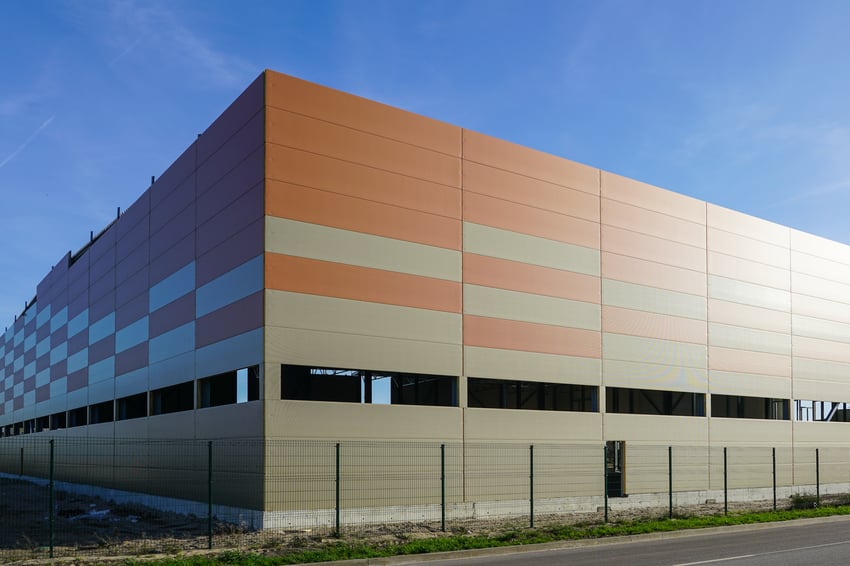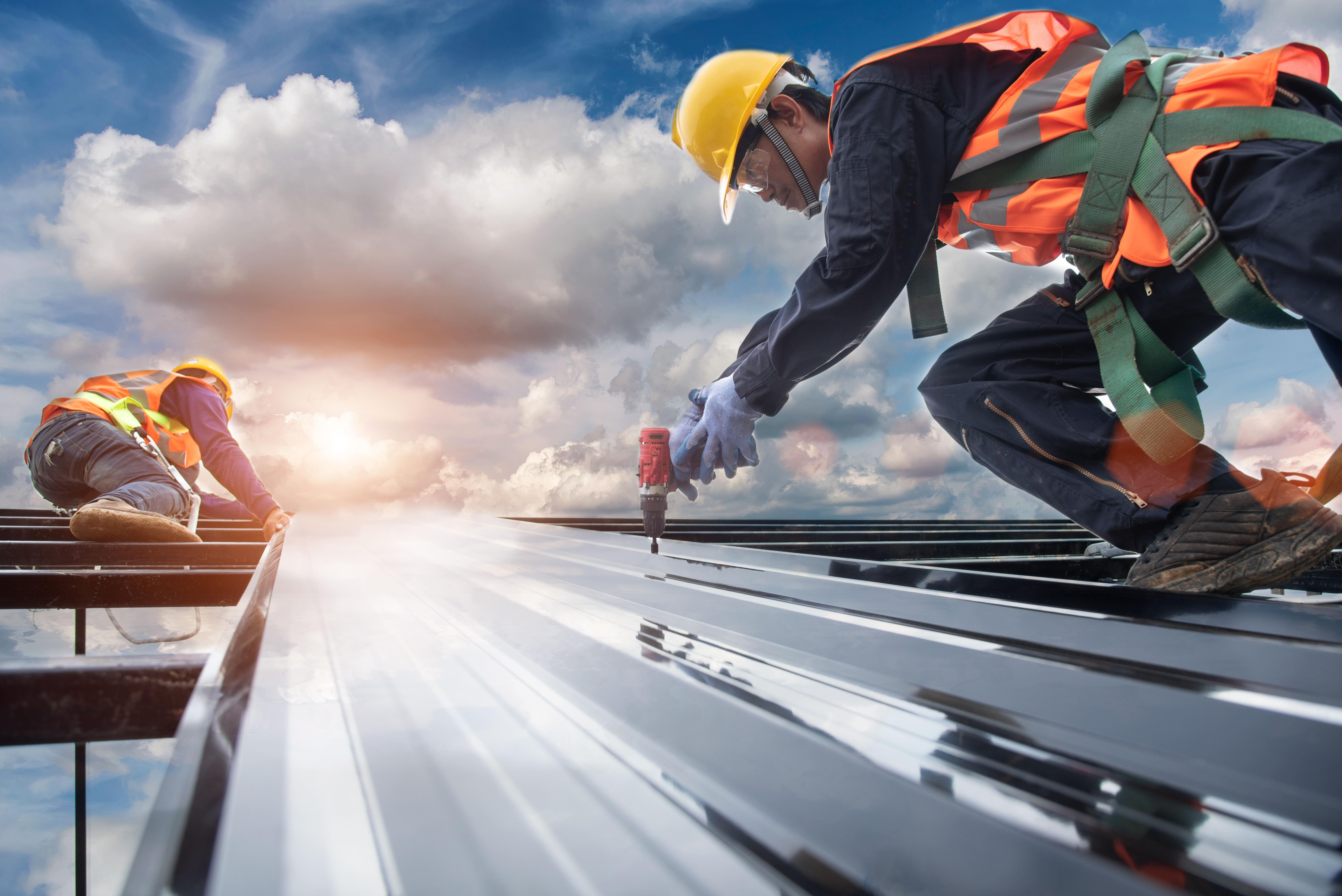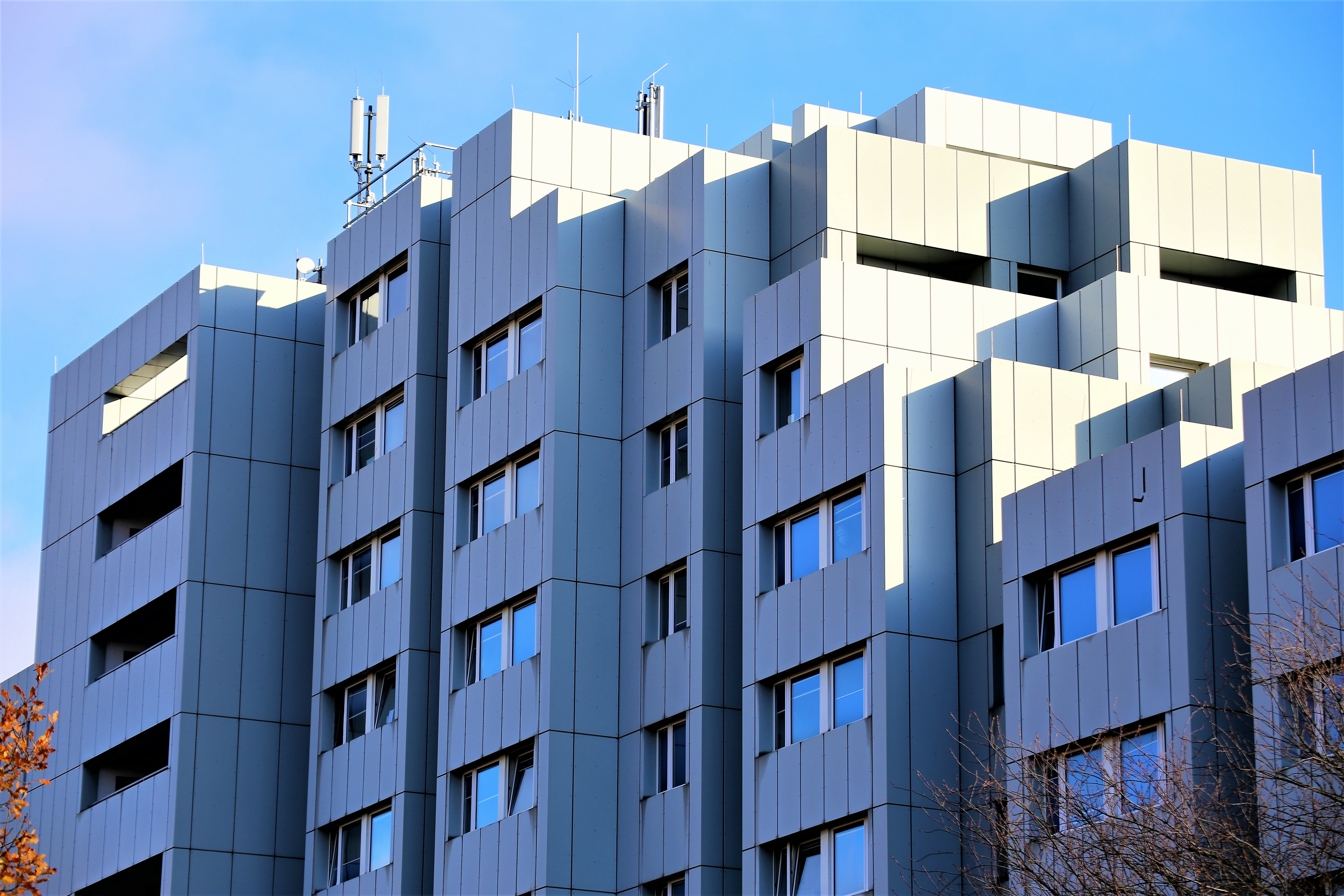Topics: CLADDING
You’ve seen it on many new commercial buildings: usually as large rectangular panels with hidden joints, giving the building a tiled, flush appearance. But it comes in more forms than you might expect. It’s a relatively new exterior feature, and it serves many important functions. We’ll cover what it can be made out of, what it is meant to do, and even a bit of the history behind it. We’re going to go in-depth on exterior wall cladding panels.
Those panels have more than one job. They insulate the building, helping to regulate internal temperature and contribute to energy efficiency, and they create a unique and thoroughly modern look in most applications. But more importantly, these panels protect buildings from the many environmental stresses they face, like rain, UV radiation, and wind. These kinds of panels are the external part of an exterior wall system called rainscreen cladding.
Although this post should be informative, it may not address absolutely everything you’ve ever wanted to know about wall cladding systems. We’re always available to talk more about anything you’re in the market for and to help you find the right fit. Get in touch if there’s anything you want to know more about your rainscreen options.
Rainscreen Materials
Rainscreen cladding is an exterior feature of buildings that prevents water and moisture from penetrating the building envelope. It is a system with three parts: the external cladding, the ventilated air gap behind that, and the water-resistant barrier attached directly to the frame of the building.
Cladding repels water with panels or other weatherproof external layers, while also draining and evaporating water that enters the air gap. Although it is primarily functional and insulative, cladding also contributes to bold and aesthetically pleasing facades.
Although it is a relatively new sight in the United States, rainscreen cladding has been used in Canada and Europe for decades. Having originated in Scandinavia in the 60’s, it is a relatively new and modern architectural option. There are a range of materials available that are suitable for rainscreen cladding. Here are just a few examples.
Fiberboard
An extremely durable and long-lasting material, fiberboard makes for cladding that is heavy and somewhat expensive but will stand up to bugs, fire, rot and nearly everything else.
Cement Board
Cement board offers the performance, aesthetic flexibility, and cost-effectiveness to be a go-to cladding material for architects and builders.
Extruded Concrete
The extrusion process creates concrete panels that are very thin but strong, an ideal material for rainscreen cladding. For a great read on why these panels are so well-fitted to rainscreen cladding, check out this article from Architectural Record.
Take a Look at All Your Options
Looking for the best solution to your cladding and rain screen needs? We can help with high-quality, cost-effective solutions. Let’s talk about what’s best for your project.
Get in Touch
The Many Materials Exterior Panels Are Made Of
One of the advantages of rainscreen cladding is that it can be made from a wide range of materials. Metal, stone, wood, and synthetic polymers are all likely candidates for paneling, offering different aesthetic and functional qualities.
Aside from aesthetics and exterior design, architects and designers may choose one material over another for any number of reasons from costs to environmental concerns to ease of maintenance or installation. There are also finishes available for synthetic panels that resemble natural materials like bamboo or sandstone, meaning that rainscreen cladding can achieve the functionality and cost of synthetics with the aesthetic appeal of natural materials.
The possibilities that come with exterior panels can make the choice a complicated one for some building projects, especially when there are multiple high-priority considerations to be made when selecting materials. Each material has qualities that make it unique, and more or less appropriate depending on specific project requirements. You can learn more about some of these unique qualities from this post as well.
From natural materials like stone to composite materials and synthetics, we’ll break down some of the most common materials used in commercial wall panels.
High Density Polyurethane
Synthetic materials offer the possibility of designing panels that resemble other materials without the associated drawbacks, giving architects more design flexibility against other project requirements. Some of the possibilities are synthetic brick, bamboo, stone, or tile.
Fiber Cement
Even with the wealth of available cladding options, fiber cement panels often stand out for their capacity to fulfill all the many needs of builders when it comes to architectural cladding that is affordable, attractive, easy-to-install, and effective. Learn more about this amazing material with an article from Architectural Record.
Ceramic
Tile and other ceramic panels can create some of the most visually striking facades around, with a range of colors and patterns available. Ceramic is a very low maintenance, environmentally friendly option.
Stone
One of the strongest and most versatile natural materials available is stone. From sandstone to slate, these panels are durable and unique, though they can come at a high price.
Metal
Few materials have more modern visual appeal than metal, which can come in a wide range of finishes. Steel is the most common material used for metal panels, although copper, aluminum, titanium, and zinc are also used. Find out more about the different types of exterior metal wall panels in this post.
Concrete
The simple, stark look of concrete without the heavy machinery, scaffolding, and labor-intensive installation.
Wood
Another natural material with unparalleled visual appeal is wood, which when treated properly, can stand up to the elements surprisingly well.
Glass
Glass paneling and glass curtain walls bring the benefits of daylighting to the exterior walls of a building. The reflective properties of glass can also create striking facades.
Learn more about effective daylighting and the kinds of skylights available for commercial building projects.
Balancing Compliance, Cost, and Performance Without Compromise
The most important thing to get right every time is compliance. No matter what, It’s never cost-effective to do it over.
The first step is keeping up to date on changes in codes and building ordinances. From reading the latest publications to attending legislature meetings, there are plenty of opportunities to stay up to date.
When shopping for materials, it’s important to look for the greatest value rather than the lowest price. It’s never cost-effective to do it over. Look for materials that offer value in the form of high performance, durability, or other factors. Making a value-oriented decision can help you build something that lasts and doesn’t have you returning to a job site when you weren’t planning to.
When you shop for materials, be sure to choose the right vendors. Good vendors will help you fully consider your options and they’ll prioritize getting you the right product for your job. The best vendors will help you increase the value of your project with deals, offers, and more. Building relationships with vendors is one of the best things you can do to help yourself consistently find the best value and the right materials for your commercial building projects.
Why Walco is the Best Source for Wall Cladding Products
Our relationships with some of the best vendors of building materials on the commercial building market help us remain an outstanding partner to contractors. We leverage our vendor relationships to come up with effective solutions to the problems contractors frequently face. We put the time and care into these relationships that you won’t find anywhere else. When you work with us, you get the benefit of these unique relationships to help you overcome challenges resulting from budget, conflicting project requirements, and more.
At Walco, we also follow changes in building codes with a laser focus. Compliance is one of the most important parts of what we do, and we enjoy knowing the finest details of it. We’re always available to discuss recent or upcoming changes, and how they will affect builders.
If you want to reduce your costs or just your headaches for the next project you’re working on, Walco is the partner you need. Contact us today to learn more about how we can help. We’re looking forward to talking with you.




